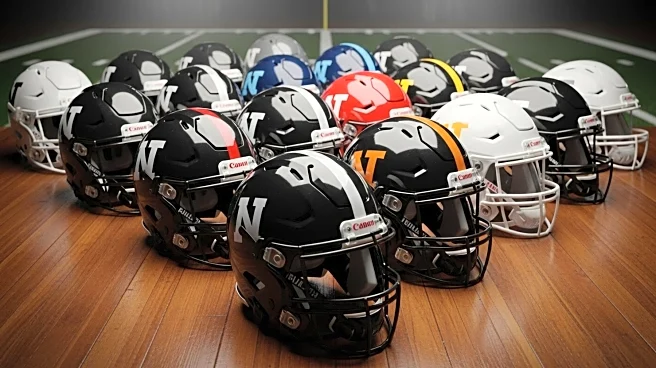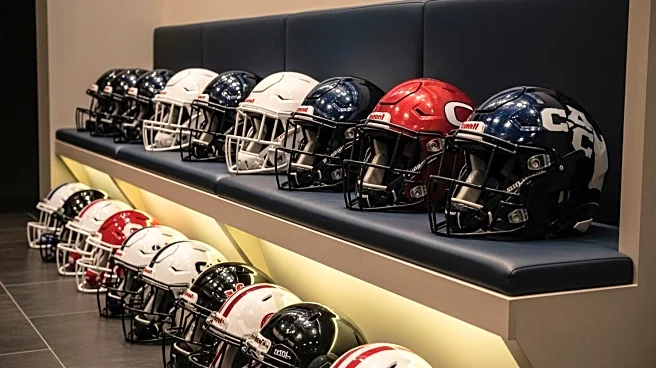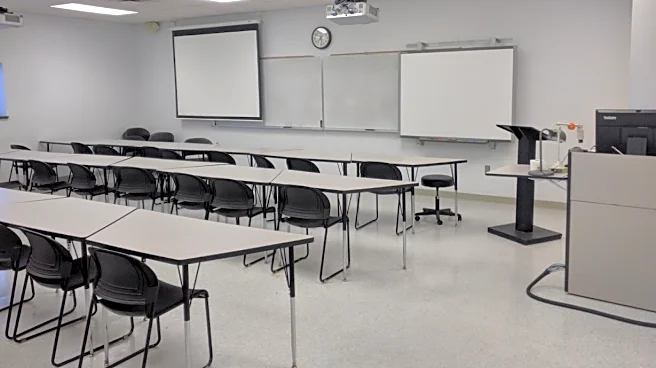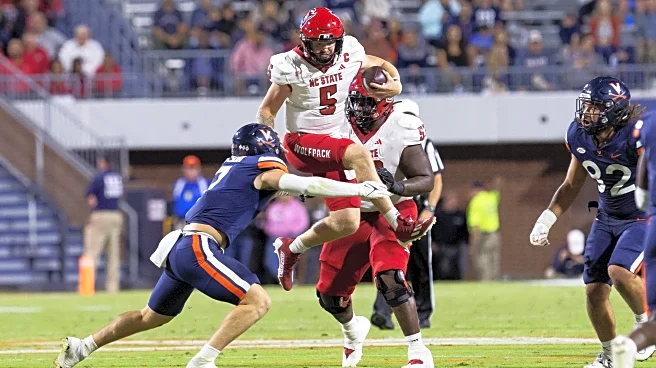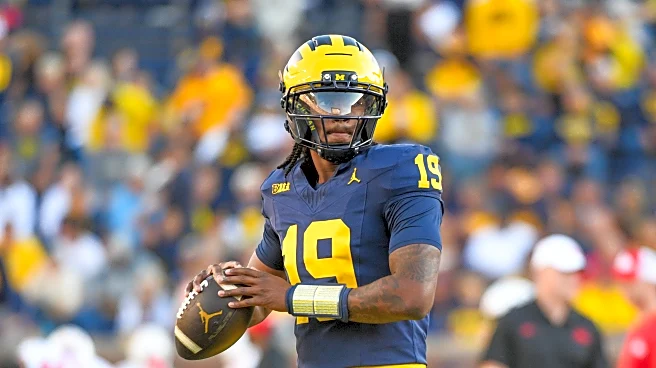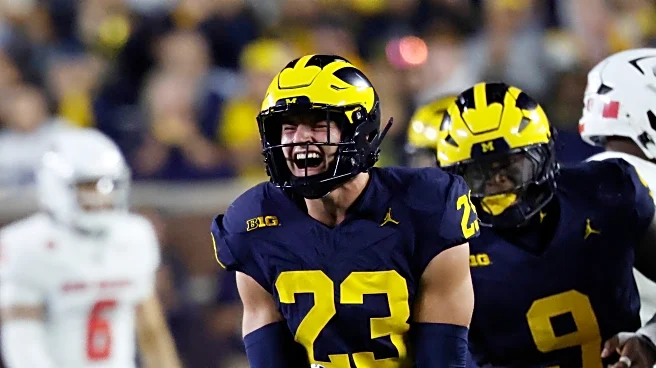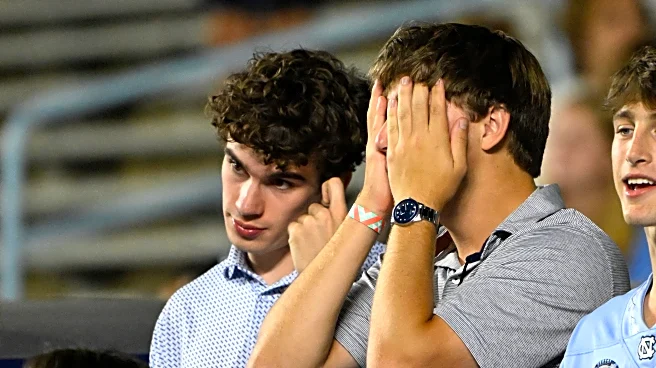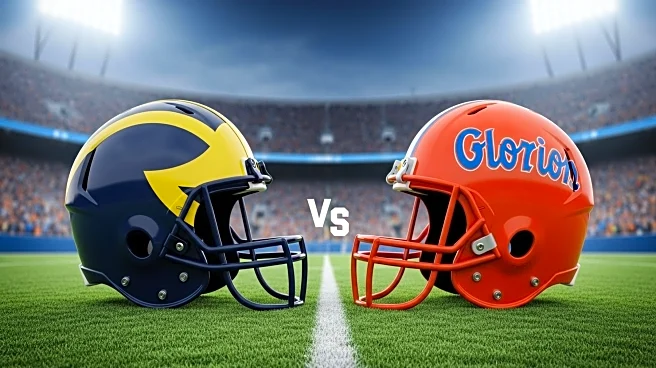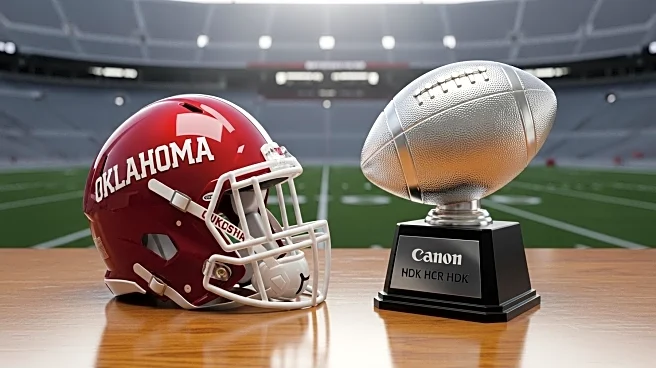What's Happening?
In 2025, four true freshmen quarterbacks have started as Day 1 starters, marking a significant shift in college football strategy. This trend contrasts with previous years where freshmen rarely started immediately. The change is influenced by factors such as the NCAA's transfer rules and the impact of name, image, and likeness policies. Notable freshmen include Bryce Underwood at Michigan, Malik Washington at Maryland, Jaron-Keawe Sagapolutele at Cal, and Bear Bachmeier at BYU. These players are part of a strong 2025 quarterback class, with schools opting to play young talent early to retain them and build around their potential.
Why It's Important?
The decision to start true freshmen quarterbacks reflects broader changes in college football, including the influence of transfer rules and financial incentives. Schools are increasingly willing to invest in young talent, driven by the need to maximize their potential and financial investments. This trend could reshape team dynamics and recruitment strategies, emphasizing the importance of developing and retaining top-tier young players. The success of these freshmen could encourage other programs to adopt similar strategies, potentially altering the landscape of college football.
What's Next?
As the season progresses, the performance of these freshmen quarterbacks will be closely monitored. Their success could lead to more programs adopting similar strategies, increasing the prevalence of freshmen starters. Additionally, schools may continue to explore financial incentives to attract and retain top talent, further influencing recruitment and team-building strategies. The impact of these changes could extend into future seasons, shaping the development of college football.
Beyond the Headlines
The trend of starting true freshmen quarterbacks highlights the evolving nature of college football, where financial considerations and strategic roster management play a crucial role. This shift may lead to ethical discussions about the impact of financial incentives on player development and team dynamics. Additionally, the emphasis on young talent could influence training programs and the overall approach to player development in college sports.
